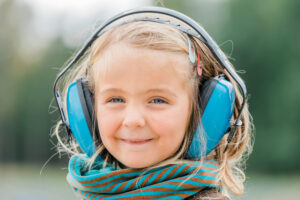Recognising sensory thresholds in kids

Is your child’s cup full? Occupational therapist Nalini Maistry looks at sensory regulation and what you can do about it.
Children have very busy schedules which often come with a variety of challenges throughout the day. These might be academic challenges, cognitive tasks, social interactions, emotions or daily needs, such as hunger, thirst and physical fatigue. Tasks that come with an additional sensory element may add to their already overflowing cup, making self-regulation much more difficult.
What is sensory dysregulation
Think about your coffee cup. When you continue to add coffee to a cup that is half full, it will quickly overflow and result in a mess. We can use this same analogy when we think of our children’s sensory needs. In the morning, their cup is empty. As the day progresses, children are bombarded with sensory and emotional experiences that fill up in their cup. Even just the morning routine can knock them off balance. The issues that they’re struggling with could be anything from a new cereal that has a different taste, a school shirt that has an itchy label, noises from other children on the school bus, waiting for too long in traffic or an assembly hall that has an overwhelming amount of sights and sounds. By the time a child gets into the classroom, their cup could be full to the point of overflowing, potentially resulting in a meltdown. This can present in different ways, including challenging behaviour, crying or avoiding the classroom altogether.
Handling the unexpected
Sometimes a child’s cup is empty when they’re at home and, unexpectedly, some family or friends pay a surprise visit. This unanticipated visit may cause some level of anxiety for a child who is thinking ahead about people hugging them, the strong smell of the visitor’s perfume or the social anxiety of being asked questions. Unexpected demands tend to fill up a little one’s cup very quickly. Therefore, it’s important that we try to offer our children ways to empty their cup throughout the day in order for them to be grounded, calm and alert.
As parents, it’s good to observe children and try to determine situations or sensations that may fill up their cup, as well as activities or situations that help empty that cup. Research shows that movement is an evidence-based practice to help children empty their cup. Activities such as a home trampoline, a five minute dance routine on YouTube or joint compressions, such as a self-hug or palm presses, are all effective means of emptying the cup. Simple fidget toys, stress balls or ear defenders may also help.
Try to chat with your little one about their sensory struggles. If you’re concerned, consider consulting with an occupational therapist and work together to help prevent these sensory meltdowns and drastically improve your child’s quality of life!
Image Credit: ShutterStock











Comments